

E-Books → Distinct Aerodynamics of Insect-Scale Flight
Published by: voska89 on 13-01-2023, 00:10 |  0
0
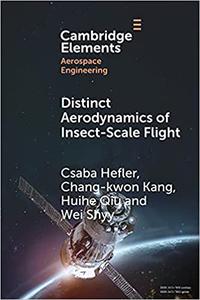
Csaba Hefler, "Distinct Aerodynamics of Insect-Scale Flight "
English | ISBN: 1108812716 | 2021 | 104 pages | PDF | 5 MB
Insect-scale flapping wing flight vehicles can conduct environmental monitoring, disaster assessment, mapping, positioning and security in complex and challenging surroundings. To develop bio-inspired flight vehicles, systematic probing based on the particular category of flight vehicles is needed. This Element addresses the aerodynamics, aeroelasticity, geometry, stability and dynamics of flexible flapping wings in the insect flight regime. The authors highlight distinct features and issues, contrast aerodynamic stability between rigid and flexible wings, present the implications of the wing-aspect ratio, and use canonical models and dragonflies to elucidate scientific insight as well as technical capabilities of bio-inspired design.
E-Books → Olfactory Concepts of Insect Control - Alternative to insecticides Volume 2
Published by: voska89 on 7-01-2023, 13:16 |  0
0
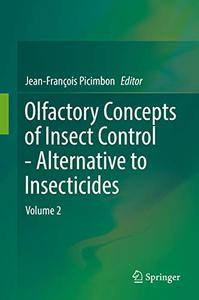
Jean-François Picimbon, "Olfactory Concepts of Insect Control - Alternative to insecticides: Volume 2"
English | 2019 | ISBN: 3030051641 | PDF | pages: 388 | 12.6 mb
Evolution gave rise to a prominent insect diversity at every level of ecological niche. Since then, hordes of insects have threatened human and cattle health as well as most of all green lands and agricultural crops. Now, the insect problem expands from many mutant forms of yellow dengue fever mosquitoes to highly-resistant larvae of most all various phytophageous species. The tremendous expansion of insects is due not only to an increasing resistance capacity to insecticides, but also to a strong capacity for adapting to different climate and environmental changes, including global warming. Obviously insects display a number of rudimentary systems to build an extremely efficient organism to survive in a changing world. In many species, one pheromone molecule is enough to trigger mating behavior. Therefore, insects have become crucial models not only for evolutionary studies, but also for understanding specific mechanisms underlying sensory-based behaviors. Most of insect species such as ants, beetles, cockroaches, locusts, moths and mosquitoes largely rely on olfactory cues to explore the environment and find con-specifics or food sources. A conglomerate of renowned international scientific experts is gathered to expose the insect problem on the various continents of the planet and propose an alternative to the use of toxic insecticides. Sex pheromones, specific chemical signals necessary for reproduction, and pheromone detection in insects are described with full details of the olfactory mechanisms in the antennae and higher centers in the brain. Thus, new synthetic pheromones and/or plant odors with specific molecular target sites in the insect olfactory system are proposed for sustainable development in agricultural and entomological industries. Disrupting insect pheromone channels and plant odor detection mechanisms is solemnly envisioned as a unique way to control invasive insect pest species while preserving human and environment safety.
E-Books → Olfactory Concepts of Insect Control - Alternative to insecticides Volume 1
Published by: voska89 on 7-01-2023, 13:15 |  0
0
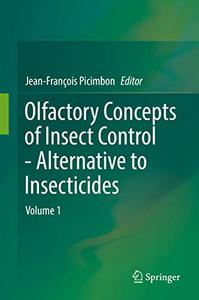
Jean-François Picimbon, "Olfactory Concepts of Insect Control - Alternative to insecticides: Volume 1"
English | 2019 | ISBN: 3030050599 | PDF | pages: 253 | 6.4 mb
Evolution gave rise to a prominent insect diversity at every level of ecological niche. Since then, hordes of insects have threatened human and cattle health as well as most of all green lands and agricultural crops. Now, the insect problem expands from many mutant forms of yellow dengue fever mosquitoes to highly-resistant larvae of most all various phytophageous species. The tremendous expansion of insects is due not only to an increasing resistance capacity to insecticides, but also to a strong capacity for adapting to different climate and environmental changes, including global warming. Obviously insects display a number of rudimentary systems to build an extremely efficient organism to survive in a changing world. In many species, one pheromone molecule is enough to trigger mating behavior. Therefore, insects have become crucial models not only for evolutionary studies, but also for understanding specific mechanisms underlying sensory-based behaviors. Most of insect species such as ants, beetles, cockroaches, locusts, moths and mosquitoes largely rely on olfactory cues to explore the environment and find con-specifics or food sources. A conglomerate of renowned international scientific experts is gathered to expose the insect problem on the various continents of the planet and propose an alternative to the use of toxic insecticides. Sex pheromones, specific chemical signals necessary for reproduction, and pheromone detection in insects are described with full details of the olfactory mechanisms in the antennae and higher centers in the brain. Thus, new synthetic pheromones and/or plant odors with specific molecular target sites in the insect olfactory system are proposed for sustainable development in agricultural and entomological industries. Disrupting insect pheromone channels and plant odor detection mechanisms is solemnly envisioned as a unique way to control invasive insect pest species while preserving human and environment safety.
E-Books → Insect Diversity, Declines and Conservation in Australia
Published by: voska89 on 23-09-2022, 23:33 |  0
0

Tim R. New, "Insect Diversity, Declines and Conservation in Australia "
English | ISBN: 3030901335 | 2022 | 248 pages | PDF | 3 MB
Problems of insect enumeration and assessment of needs are addressed in the contexts of rapid and substantial losses and changes to all key Australian terrestrial and freshwater environments and promoting awarenesss of the importance of insects. Further definition of the insect fauna and its peculiarities can aid threat alleviation and practical management to protect and conserve this unique and largely endemic biodiversity. Written for the many environmental managers and naturalists who are not primarily entomologists, the ten chapters expand from considerations of insect decline and diversity to the unique features of the Australian fauna and its characterisation. Cases and examples from throughout the world illustrate the major needs, approaches and priorities to sustaining a poorly known, diverse and ecologically varied insect heritage of global significance.
E-Books → Microbial Approaches for Insect Pest Management
Published by: voska89 on 12-09-2022, 14:11 |  0
0
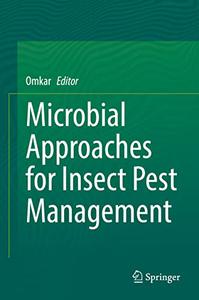
Microbial Approaches for Insect Pest Management by Omkar
English | PDF | 2022 | 452 Pages | ISBN : 9811635943 | 10.5 MB
Video Training → The Gnomon Workshop – Hyper-realistic Insect Design with Eric Keller
Published by: voska89 on 3-08-2022, 16:32 |  0
0
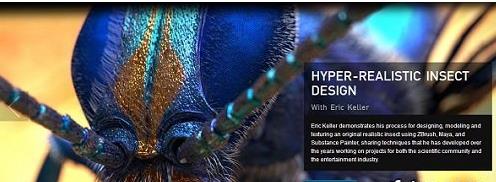
The Gnomon Workshop – Hyper-realistic Insect Design with Eric Keller
Content Source:https://www.thegnomonworkshop.com/tutorials
Genre / Category:
3D TutorialsFile Size :8.5GB
In this video series, Eric Keller demonstrates his process for designing, modeling and texturing an original realistic insect using ZBrush, Maya, and Substance Painter, sharing techniques that he has developed over the years working on projects for both the scientific community and the entertainment industry. He talks about how he relies on insect physiology and evolutionary biology as guidelines for his original concept and how to bring photo and microscope reference directly into ZBrush using Spotlight.
E-Books → Insect Sampling in Forest Ecosystems
Published by: voska89 on 28-07-2022, 23:27 |  0
0
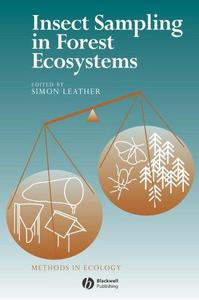
Insect Sampling in Forest Ecosystems By
2004 | 315 Pages | ISBN: 0632053887 | PDF | 3 MB
Insect Sampling in Forest Ecosystems highlights the problems faced by entomologists working in forest ecosystems.Insects play a major part in all aspects of ecology Brings together the methodology needed to investigate insects through the various strata of the forest canopy Covers techniques associated with various specialised groups of forest insects Each chapter is backed up by a sound approach to experimental design and data analysis Essential reading for advanced students and researchers as well as teachersContent: Chapter 1 Sampling Theory and Practice (pages 1-15): Simon R. Leather and Allan D. WattChapter 2 Sampling Insects from Roots (pages 16-36): Alan C. GangeChapter 3 Pitfall Trapping in Ecological Studies (pages 37-57): B. A. WoodcockChapter 4 Sampling Methods for Forest Understory Vegetation (pages 58-76): Claire M. P. OzanneChapter 5 Sampling Insects from Trees: Shoots, Stems, and Trunks (pages 77-115): Martin R. SpeightChapter 6 Insects in Flight (pages 116-145): Mark YoungChapter 7 Techniques and Methods for Sampling Canopy Insects (pages 146-167): Claire M. P. OzanneChapter 8 Sampling Methods for Water?Filled Tree Holes and Their Artificial Analogues (pages 168-185): S. P. Yanoviak and O. M. FinckeChapter 9 Sampling Devices and Sampling Design for Aquatic Insects (pages 186-220): Leon Blaustein and Matthew SpencerChapter 10 Methods for Sampling Termites (pages 221-253): David T. Jones, Robert H. J. Verkerk and Paul EggletonChapter 11 Parasitoids and Predators (pages 254-278): Nick Mills
E-Books → Insect transgenesis methods and applications
Published by: voska89 on 9-07-2022, 03:58 |  0
0

Insect transgenesis : methods and applications By Alfred M Handler; Anthony A James
2000 | 397 Pages | ISBN: 0849320283 | PDF | 28 MB
Content: An Introduction to the History and Methodology of Insect Gene Transfer / Alfred M. Handler -- Gene Targeting -- Targeted Transformation of the Insect Genome / Paul Eggleston, Yuguang Zhao -- Site-Specific Recombination for the Genetic Manipulation of Transgenic Insects / Yikang S. Rong, Kent G. Golic -- Transgenic Selection -- Eye Color Genes for Selection of Transgenic Insects / Abhimanyu Sarkar, Frank H. Collins -- Green Fluorescent Protein (GFP) as a Marker for Transgenic Insects / Stephen Higgs, David L. Lewis -- Resistance Genes as Candidates for Insect Transgenesis / Richard H. ffrench-Constant, Mark Q. Benedict -- Viral Vectors -- Pantropic Retroviral Vectors for Insect Gene Transfer / Jane C. Burns -- Densonucleosis Viruses as Transducing Vectors for Insects / Jonathan Carlson, Boris Afanasiev, Erica Suchman -- Sindbis Virus Expression Systems in Mosquitoes: Background, Methods, and Applications / Ken E. Olson -- Retrotransposons and Retroviruses in Insect Genomes / Christophe Terzian, Alain Pelisson, Alain Bucheton -- Polydnaviruses and Insect Transgenic Research / Bruce A. Webb -- Transposable Element Vectors -- Hermes and Other hAT Elements as Gene Vectors in Insects / Peter W. Atkinson, David A. O'Brochta -- Genetic Engineering of Insects with mariner Transposons / David J. Lampe, Kimberly K. O. Walden, John M. Sherwood, Hugh M. Robertson -- The TTAA-Specific Family of Transposable Elements: Identification, Functional Characterization, and Utility for Transformation of Insects / Malcolm J. Fraser, Jr. -- Symbiont Vectors.
E-Books → Insect Ecology Concepts to Management
Published by: voska89 on 21-06-2022, 08:39 |  0
0
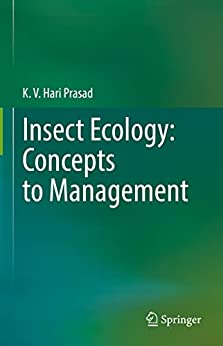
English | 2022 | ISBN: 9811917817 | 236 pages | True PDF EPUB | 7.28 MB
This book presents comprehensive information on various aspects of ecology with special reference to insects, to form a platform to design an ecologically sound insect pest management. Insects are the most dominant and diverse group of living organism on earth. Owing to their smaller size, smaller space and food requirements, more number of generation per unit time, insects serves as one of the best subject matter for studies on various ecological aspects such as chemical ecology, population dynamics, predator/parasitoid-prey interactions etc. The knowledge on various aspects of insect ecology helps in formulating an effective environmentally benign insect pest management. This book is of interest and use to the post graduate students and researchers working on various aspects of insect ecology with special emphasis on population dynamics, chemical ecology, tri tropic interactions, ecological engineering and Ecological Insect pest management.
E-Books → Insect Stings And Bites Basic Information About Bees Wasps And Ants
Published by: Emperor2011 on 16-04-2022, 18:21 |  0
0

Insect Stings And Bites Basic Information About Bees Wasps And Ants | 1.14 MB
N/A | 10 Pages
Title: Safety and Health Tech Tips
Author: USDA Forest Service
Year: N/A



